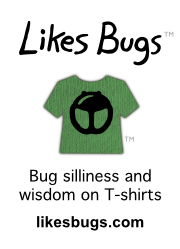The collection results are in. John Jackman, Allen Dean, and Mike Quinn published A Preliminary List of the Spiders Collected from a Giant Web at Lake Tawakoni, Texas, reporting on the spiders that Mike collected, along with the two funnel spiders (one mistakenly not reported) and the pirate spider I had thrown in.
Here are some photos of these spiders, including one that was present but didn’t make the list, the social cobweb spider Anelosimus studiosus:
The following table lists the spiders that were collected, here scrunched down and made friendly to lay people:
| Family of Spiders | Kinds | Count | Not ID’d |
|---|---|---|---|
| Long-jawed Orbweavers (Tetragnathidae) | 1 | 151 | 125 |
| Jumping Spiders (Salticidae) | 6 | 46 | 29 |
| Orbweavers (Araneidae) | 5 | 19 | 6 |
| Cobweb Weavers (Theridiidae) | 2 | 18 | 4 |
| Meshweb Weavers (Dictynidae) | ? | 5 | 5 |
| Anyphaenidae (no common name) | ? | 4 | - |
| Funnel Spiders (Agelenidae) | 1 | 2 | 1 |
| Sac Spiders (Clubionidae) | 1 | 1 | 1 |
| Ant Mimics (Corinnidae) | 1 | 1 | 1 |
| Wolf Spiders (Lycosidae) | 1 | 1 | 1 |
| Pirate Spiders (Mimetidae) | 1 | 1 | - |
| Crab Spiders (Thomisidae) | 1 | 1 | - |
By far the most numerous species was the long-jawed orbweaver. 26 of them were identified to be the Gautemalan Long-jawed Spider (Tetragnatha guatemalensis). The remaining were identified to belong to the Tetragnatha genus but couldn’t be identified to species because they were immature. Very likely, there were nearly all Gautemalan Long-jawed Spiders. These were the spiders that were everywhere. Other arachnologists that had received specimens confirmed the species. Despite the name, this spider is found throughout at least Central and North America.
Hank Guarisco, Adjunct Curator of Arachnids at the Sternberg Museum of Natural History, Kansas, spent several days at the site. On September 6th he reported several other species to Allen Dean, especially noting the presence of the social cobweb spider Anelosimus studiosus, although not in great numbers—they were “deep inside” the web.
Okay, so our species list didn’t rule out funnel spiders, and it didn’t rule out the idea that the social cobweb spider might be a factor. However, there were no alien surprises. The web was abnormal, but all the spiders that seemed to be in it were normal. (Some arachnologists were now calling for sampling to be done at the tops of trees, just in case we were missing something up there.)
But Hank also had this to say:
Do you know of any Tetragnatha species that has exhibited this kind of behavior? I don’t. The females are actively building webs at night, and the males wander around. […] There are many Larinioides that come out at night and build webs over everything. […] —Hank Guarisco (9 Sep 07)
Hank had seen the spiders building at night, and he was sure that the long-jawed orbweavers were significant contributors. But he’s also suggesting that other orbweavers (e.g. Larinioides of the Araneid family) were contributing too. This may not be the work of just one spider.
The spiders were building at night! I had to go back and watch them at night! And I would take my video camera that has night vision.


